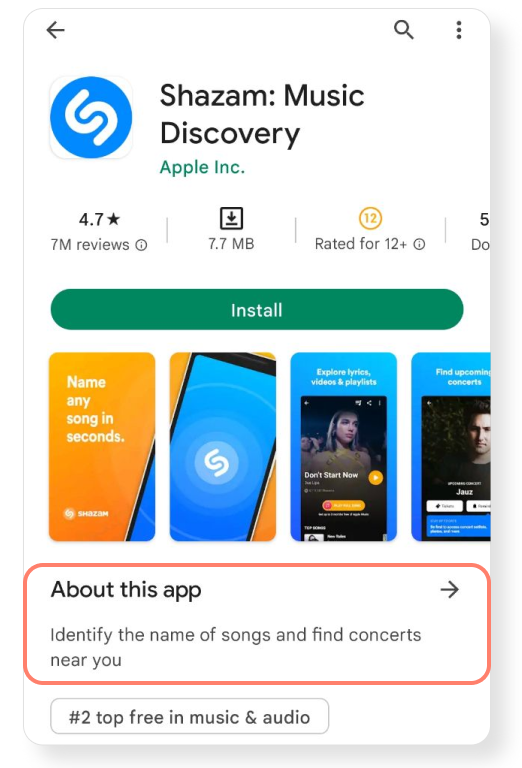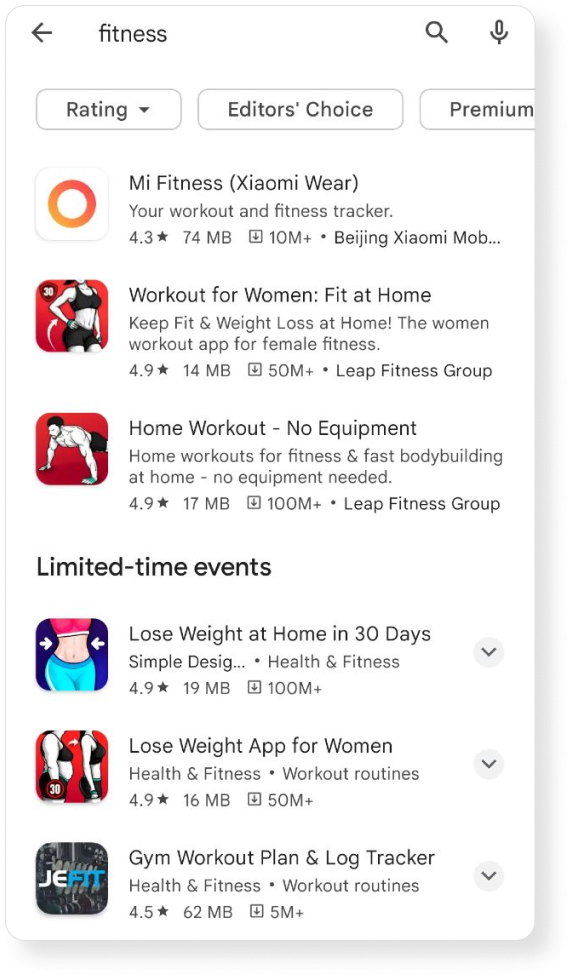Failing to recoup app advertising costs: what can I do?
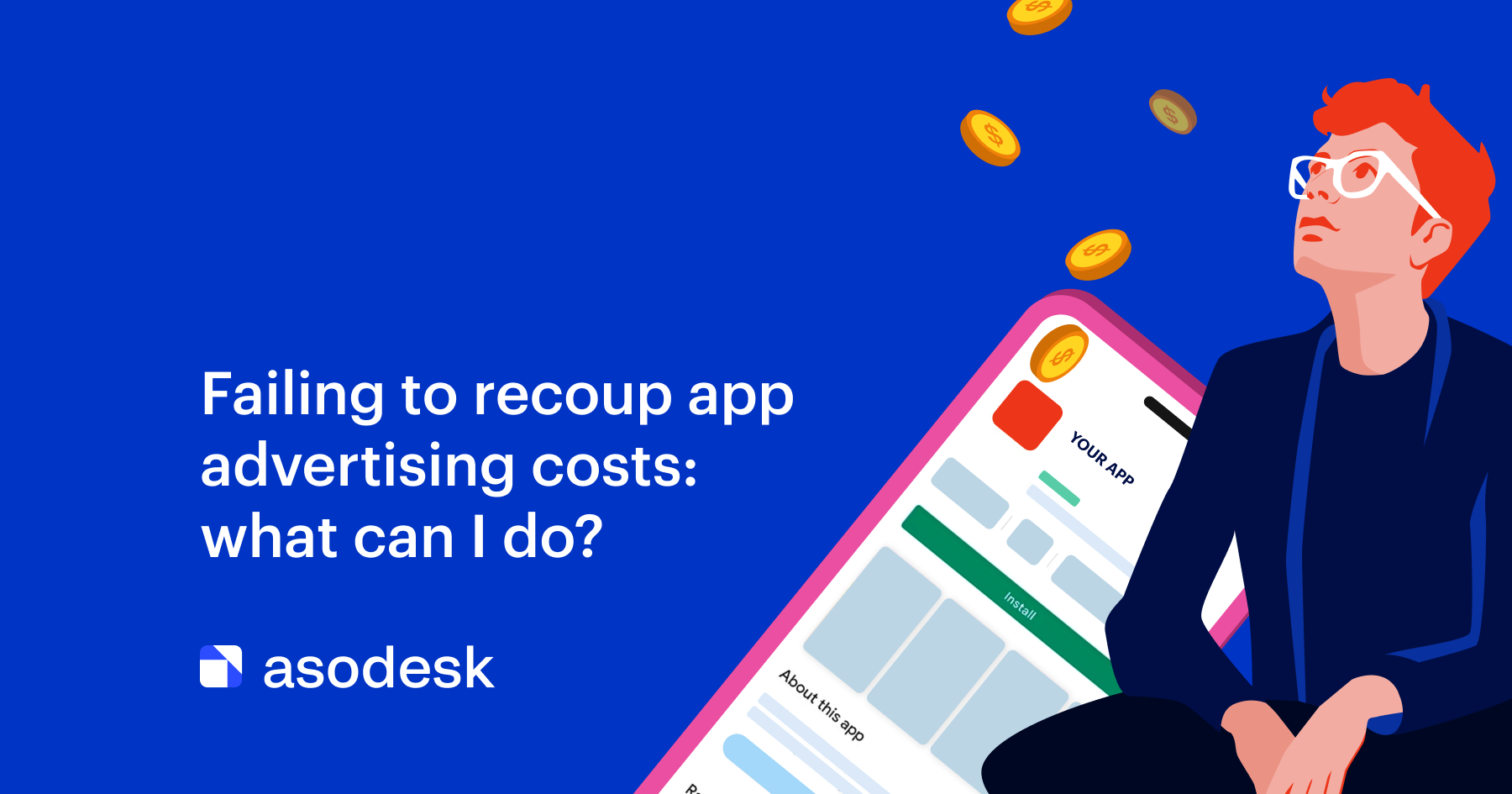
High cost per install, poor conversion, and low ROAS are a nightmare for any UA specialist. We will explain how you can solve these problems and walk you through the most relevant approach to UA used by top advertisers in 2023.
Why you need synergy between paid and organic UA in 2023
What UA strategy top advertisers are choosing in 2023
How you can get more organic installs from the App Store and Google Play
Key takeaways
Why you need synergy between paid and organic UA in 2023
Costs per install continue to grow, and ads don’t pay themselves off. Why is that?
1. Increased competition in the market
With every year, there are more and more advertisers and competition in different niches is increasing. This drives the cost per install, and publishers have to increase their advertising budgets.
According to Statista, global spending on mobile advertising more than doubled between 2017 and 2022: from $137.7M to $327M. It is expected that in 2024 these costs will reach almost $400M.

Advertisers are investing more money in advertising. As a result, you need big advertising budgets to get ahead of them.
The current Cost Per Install (CPI) in 2023 is very high for the average app publisher. According to Business of Apps, the average CPI is $1.24. Prices vary depending on the advertising platform. For example, on Instagram and Twitter, the average cost per install is $2.53.

2. Changes in the algorithms of advertising platforms
Advertising platforms like Facebook, Google Ads, and Apple Search Ads regularly update their algorithms. These changes can affect targeting, bids, ad relevance, and campaign optimization. If you don’t keep up with updates and adapt your advertising, your advertising will fail to deliver results.
For example, since October 2020, app metadata has started having a bigger influence on the effectiveness of advertising campaigns in Apple Search Ads. Previously, algorithms mainly relied on keywords chosen by the advertiser for targeting. However, with the increasing importance of metadata, Apple started paying more attention to the quality of the app page when determining ad impressions.
For UA managers, this means that optimizing metadata becomes an even more important aspect of a successful advertising campaign. And to optimize metadata for store algorithms, you need App Store Optimization.
3. Changes in laws and rules of advertising platforms
Advertising platforms make changes to their rules and policies, which may affect your advertising campaigns. One of those changes occured two years ago. With the release of iOS 14.5 in April 2021, it became mandatory to use the AppTrackingTransparency (ATT) framework. Apps must now obtain consent in order to track user activity and collect data through Identifier Advertising (IDFA).
This has affected advertising platforms, including Facebook and Google. Targeting accuracy has decreased, as has the ability to track ad results, including conversion and app installs. ATT is one of the reasons advertising has become less effective.
Because of these changes, it has become more difficult to get the desired results from advertising. A UA manager can create effective advertising campaigns, and choose the right target audience, but advertising will not be effective due to high competition, high installation costs, and stricter rules from advertising platforms.
What UA strategy top advertisers are choosing in 2023
How can you make your UA more effective and reduce your app’s cost per install? In 2023, you need a qualitatively different approach to paid UA — an approach top app publishers have been using for quite some time.
For example, Lorenzo Rossi, co-founder at REPLUG, says that for a tangible UA result, you need a holistic approach now: the most important factor is the synergy of ASO, UA strategies, and internal work on the app.
It is crucial to have a unified strategy for UA that will have a place for both paid and organic promotion. Paid UA and App Store Optimization (ASO) directly affect each other:
1. ASO allows you to increase your return on marketing investment (ROMI)
This way, you can get almost free organic installs from the App Store and Google Play search, which will reduce wage costs in marketing and will bring in a significant part of your income.
2. ASO helps to reduce the volume of advertising purchases
The size of your purchase affects the amount of organic traffic you receive. The more paid installs your app receives, the higher it will rank in search. Conversely, the more organic installs you get, the less you depend on paid UA.
The top advertisers are now calculating their budget based on the potential volume of organic installs they can attract. You can build a budget taking into account the optimal volume of organic installs to achieve your KPIs.
3. ASO will allow you to increase your view-to-install conversion
The goal of ASO is not only to improve visibility and increase organic traffic but also to increase your view-to-install conversion. The higher your conversion, the better your return on advertising will be. To achieve this, you need to create an appealing name, description, icons, and screenshots for your target audience. We will discuss how you can do this in the next chapter.
4. UA and ASO both offer useful insights
ASO analytics provides valuable insights for your UA strategy. For example, through paid traffic channels, you can understand which keywords in ads or on the app page lead to a higher conversion rate. Later, you can apply these keywords to your ASO strategy.
UA also brings useful insights to ASO. For example, it helps understand which creatives users respond to best. You can use these creatives in-app screenshots.
Using UA and ASO together will take your marketing strategy to the next level. These two methods create synergy and help each other. As a result, you will not only reduce spending on advertising and increase ROMI, but also significantly increase the number of organic installs your app receives. In the next chapter, we will explain the main ways you can generate organic installs from the App Store and Google Play.
How you can get more organic installs from the App Store and Google Play
1. Improve your app’s visibility on the App Store and Google Play using keywords
Most organic installs come from the App Store and Google Play search. Users find your app using search queries and install it. You can influence where your app places in the search results by adding keywords to your app’s metadata.
In the App Store, it’s important to add keywords to the Title, Subtitle, and Keyword Field. In Google Play, keywords are necessary for the Title, short description, and full description.
You can find the most suitable and effective keywords for your app using ASO tools. If your app is already popular and has a lot of installs compared to competitors, you can try promoting it for high-frequency search queries.

If you’re just entering the market, it’s important to add low-competition queries and long-tail keywords to your metadata. They may not be as popular, but you will get to the top of the search for them more easily. These keywords often generate a significant part of your app’s traffic.

It is also important to consider queries that attract traffic to your competitors. Your goal is to outperform your competitors in search for these keywords.

Read more on how you can find all the keywords for your app in this article.
2. Work on the conversion of the app page
ASO allows you not only to increase your app’s number of organic installs but also to improve your view-to-install conversion from all traffic sources. If you have a more appealing app page, your conversion rate will increase and your cost per install will decrease.
To increase the conversion of your app page, you need to create text metadata that will best meet the needs of your target audience. To do this, you need to choose a name that will help a user to understand the purpose of your app at first glance.
For example, users will immediately understand that an app with this name will help them with their workouts at home without equipment.

The view-to-install conversion is also significantly influenced by the short description that users see on the app page. It must contain your USP and competitive advantages. For example, the publishers of Shazam emphasize that with this app you can find song titles and concerts nearby.
Read more on how to create the best description for your app in our article.
Conversion is strongly influenced by the visual metadata of the app: the icon, screenshots, and video previews.
The icon is the first visual element that users notice both in search and on the app page. It is important that it shows the basic functions of your app and stands out from the competition — especially in Google Play, where users see only the name and icon in the search results.
Screenshots of your app should convince users to install it. Therefore, they need to demonstrate the key functions of the app, its competitive advantages, and its USP.
For example, Lime’s screenshots emphasize that thanks to this app you can find a scooter or bicycle near you at any time.
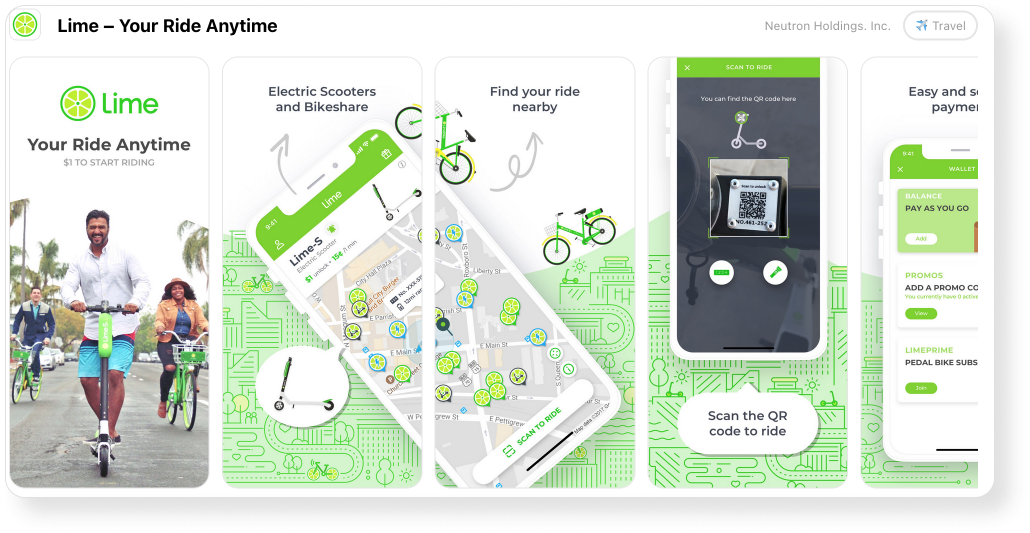
The more you know about user behavior, the more chances you have to create screenshots that will increase your conversion.
Video previews often lower the view-to-install conversion. According to a study by SplitMetrics, video previews decreased conversion by 9.6% for social media apps. This is why, before you add a video to the app page, you need to conduct A/B tests.
4. Use custom app pages
Custom app pages are available on both the App Store and Google Play. On Google Play, they are called Custom store listings and allow you to create custom metadata that will be suitable for a certain segment of users. This will help you create individual pages to attract different segments of the target audience.
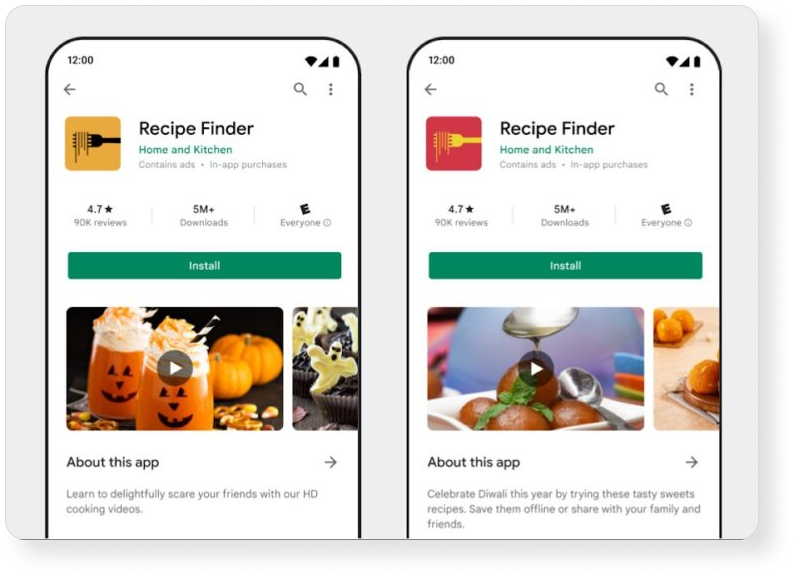
Source: android-developers.googleblog.com
Custom Product Pages on the App Store also allow you to create up to 35 custom pages for your app. Each page can focus on certain features, your USP, or competitive advantages that may be interesting to specific users. You can create separate screenshots, texts, and video previews for a custom page.
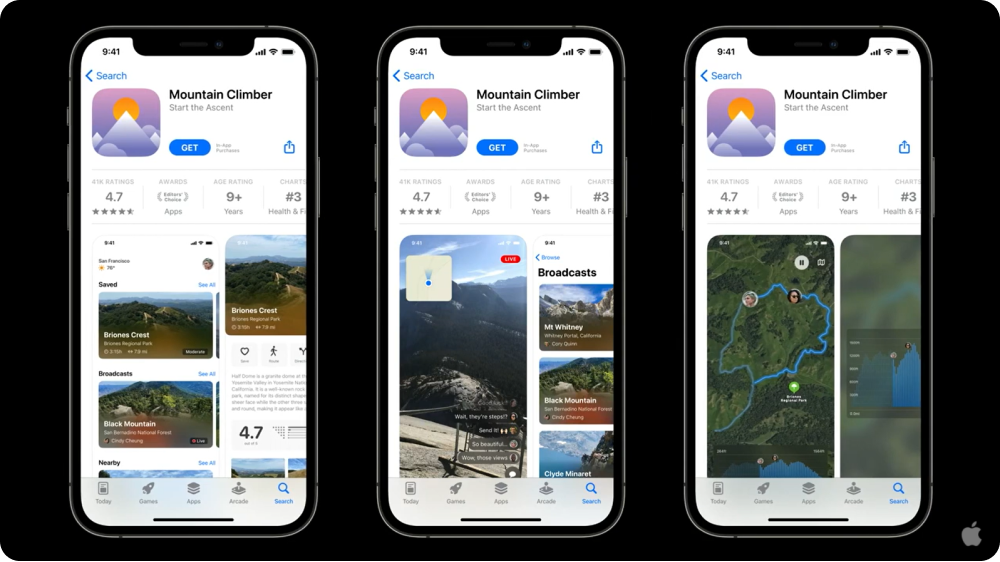
Source: developer.apple.com
With this feature, you can create up to 50 custom app pages, each of which will have a unique URL and be shown to the appropriate group of users.
5. Work on user ratings and reviews. According to research by Apptentive, changing your rating from three to four stars can increase conversion on the App Store by 89%. And when boosting your rating from three to five stars — by 97%.
This is why it is important to regularly analyze your rating and monitor the reasons for its drop. To increase user rating and loyalty, you need to respond to reviews, both negative and positive.
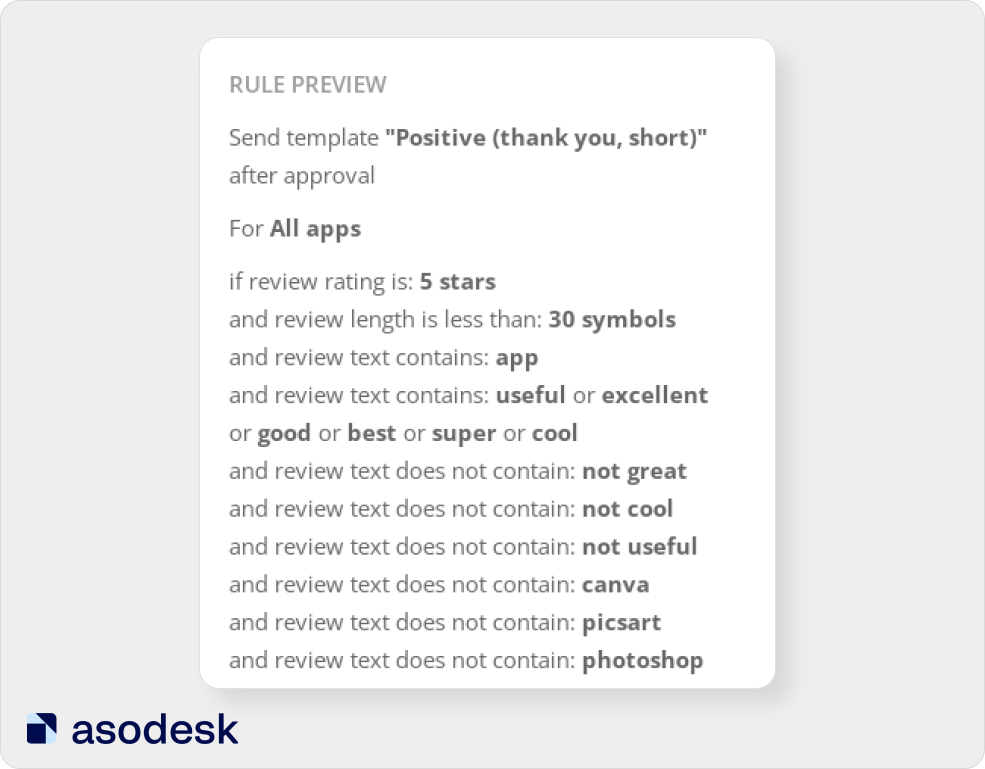
It is especially important to work with featured reviews that attract the most likes and are shown at the top of the app page.
You can now save time working with reviews with the help of dedicated tools. For example, Asodesk clients note that thanks to the work with reviews on our platform, they managed to quarter their response-to-review time.
To get free organic installs from the App Store and Google Play search, it’s important to properly optimize text and visual metadata, work on app rankings, use custom pages, and update metadata regularly.
Key takeaways
If you use paid UA and ASO in conjunction (like top app publishers), you can get excellent results:
1. Increase conversion rate (page view to install).
2. Increase the number of organic installs from search thanks to paid UA. An increase in installs from paid channels will contribute to a better app ranking in the search.
3. Reduce your advertising budget for paid UA by working with organic traffic.
If you want to achieve these goals, now is the time to try App Store Optimization for your apps. ASO experts from Angle Connect can audit your app and tell you how you can build an organic UA strategy.
If you are ready to manage ASO on your own, you should opt for dedicated tools that will be useful at all stages of optimization. At Asodesk, you can find 34 professional tools for improving app visibility, increasing installs, and optimizing your work with reviews.

Subscribe to our newsletter and receive regular updates on App Store Optimization news, as well as informative articles covering ASO, mobile marketing, and app reviews management.

